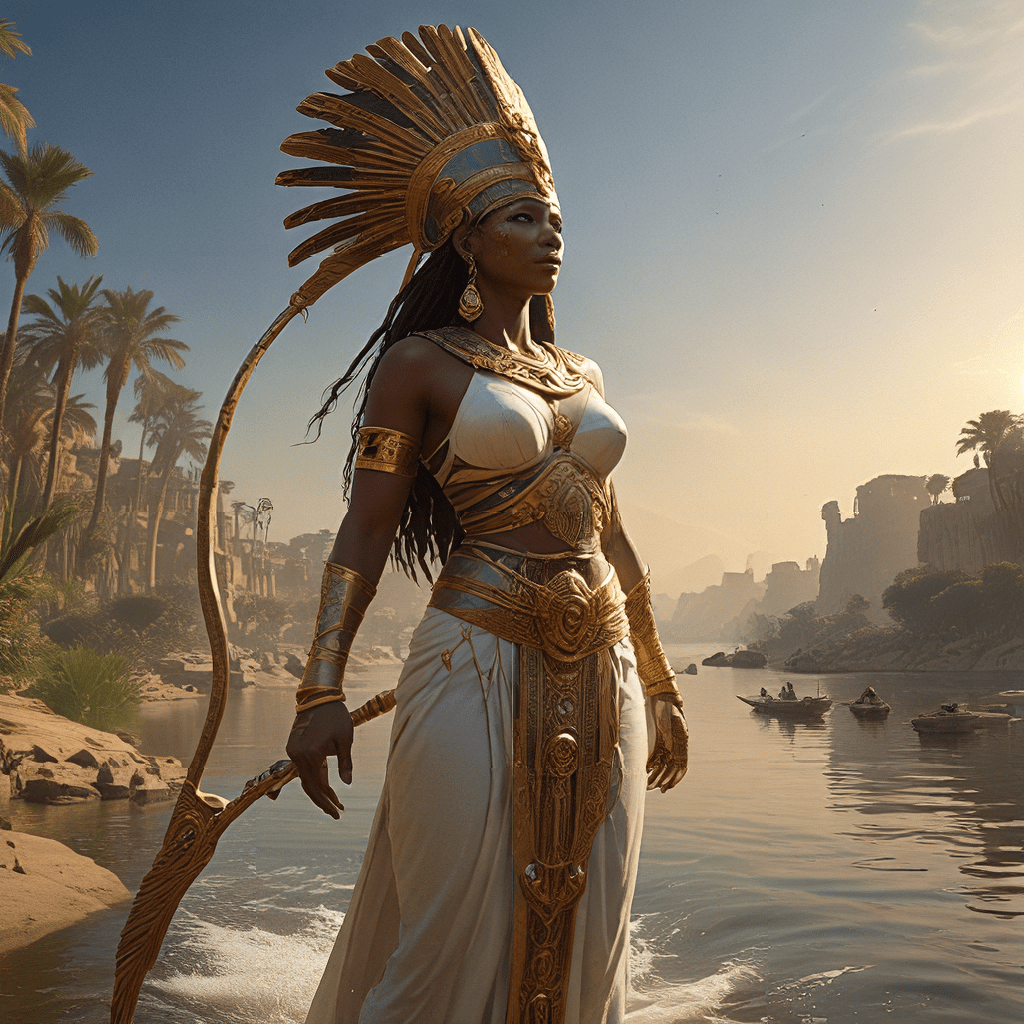The Nile Spirits: Exploring the Mythological Guardians of the River
1. Introduction: The Nile – Lifeline of Ancient Egypt
The Nile River, flowing through the heart of ancient Egypt, was more than just a source of water. It was the lifeblood of the civilization, sustaining its people and shaping its culture. The annual floods brought fertile silt, making the land suitable for agriculture and providing the foundation for Egyptian society. The river also served as a vital means of transportation, connecting different parts of the country and enabling trade. Its presence permeated every aspect of daily life, from religious rituals to artistic expression.
The Nile’s profound influence on Egyptian life is reflected in the rich mythology that grew around it. The river became a source of inspiration, its power and mystery giving rise to stories of gods, spirits, and mythical creatures. These tales provide valuable insights into the ancient Egyptians’ understanding of the world, their beliefs about nature, and their yearning for order and prosperity.
2. Hapy: The Personification of the Nile’s Flood
Hapy, the god of the Nile’s annual flood, embodied the river’s life-giving power. Depicted as a large, plump figure with lotus flowers in his hair, Hapy symbolized the abundance and fertility brought by the rising waters. He was often shown with a double crown, representing Upper and Lower Egypt, emphasizing the unifying influence of the Nile.
The annual flood was a crucial event for the Egyptians. It ensured the success of their agriculture, providing the fertile soil necessary for crops. Hapy was worshipped as a benevolent deity, whose favor was essential for the well-being of the land and its people. Temples and shrines were dedicated to him, and festivals were held to celebrate his arrival and appease him.
3. The Nile’s Guardians: Protecting the River’s Flow
Beyond Hapy, other spirits guarded the Nile, ensuring the smooth flow of its waters. These guardians were associated with different sections of the river, each possessing unique powers and responsibilities. Their presence in the mythology reflects the Egyptians’ belief in the importance of protecting the river from harm and maintaining its vital role.
In ancient Egyptian cosmology, the world was seen as a carefully balanced system, where even the smallest disruption could have significant consequences. The Nile, being the source of life, required constant attention and protection. The guardians, by safeguarding the river’s flow, ensured the stability and prosperity of the entire civilization.
4. The Serpents of the Nile: Powerful and Protective
The snake was a powerful symbol in Egyptian mythology, associated with both creation and destruction. In the context of the Nile, it represented the guardian of the river’s depths, a creature of immense power and mystery. This serpent, often depicted with scales like a crocodile, was believed to reside in the river’s deepest pools, protecting its secrets and ensuring the balance of its ecosystem.
Legends surrounding the Nile Serpent speak of its ability to control the river’s flow, regulate its water levels, and ward off any threats. It was seen as a benevolent force, safeguarding the river and its inhabitants. The serpent’s association with the Nile’s depths amplified the river’s mystique, making it a source of both awe and fear.
5. The Hippopotamus: A Symbol of Strength and Danger
The hippopotamus, a powerful and potentially dangerous animal, held a significant place in Egyptian mythology. It was seen as a symbol of strength, fertility, and the untamed forces of nature. Its association with the Nile was deeply rooted, as the river provided its habitat and shaped its behavior. The hippopotamus represented the duality of nature – its strength and beauty juxtaposed with its unpredictable and potentially destructive nature.
In ancient Egyptian art, the hippopotamus was often depicted in scenes of combat, highlighting its strength and ferocity. However, it also held a spiritual significance, as it was associated with the goddess Tawaret. Tawaret, depicted as a hippopotamus with the head of a lioness, was a powerful deity who protected women and children during childbirth and ward off evil spirits. She embodied the protective and nurturing aspects of the hippopotamus, associating the animal with both danger and safety.
6. The Crocodile: The Guardian of the Nile’s Shores
The crocodile, a fearsome predator of the Nile, held a complex and multifaceted position in Egyptian mythology. Its powerful presence and predatory nature made it a symbol of strength, danger, and the untamed forces of nature. As a guardian of the Nile’s shores, the crocodile represented the river’s power and its ability to both nurture and destroy.
The crocodile god Sobek was closely associated with the Nile and its inhabitants. He was depicted with the head of a crocodile and often shown holding a scepter or other symbols of power. Sobek was revered as a protector of the Nile and its people, ensuring their safety and prosperity. His temples were often built near the river, reflecting the importance of his role in maintaining the balance of the ecosystem.
7. The Nile in the Afterlife: The River of the Dead
The Nile’s importance in Egyptian life extended beyond the physical world and into the realm of the afterlife. In ancient Egyptian beliefs, the deceased embarked on a perilous journey through the underworld, navigating the River of the Dead to reach the afterlife. This river, often associated with the Nile, represented the passage between life and death, symbolizing transformation and renewal.
The Egyptians believed that the deceased had to navigate the treacherous waters of the River of the Dead, guided by the god Anubis. They had to overcome obstacles, face judgment, and prove their worthiness to enter the afterlife. The Nile, in its symbolic form, played a crucial role in this process, representing the journey from the material world to the spiritual realm. Its waters served as a bridge between life and death, connecting the living and the dead in a timeless cycle of existence.




